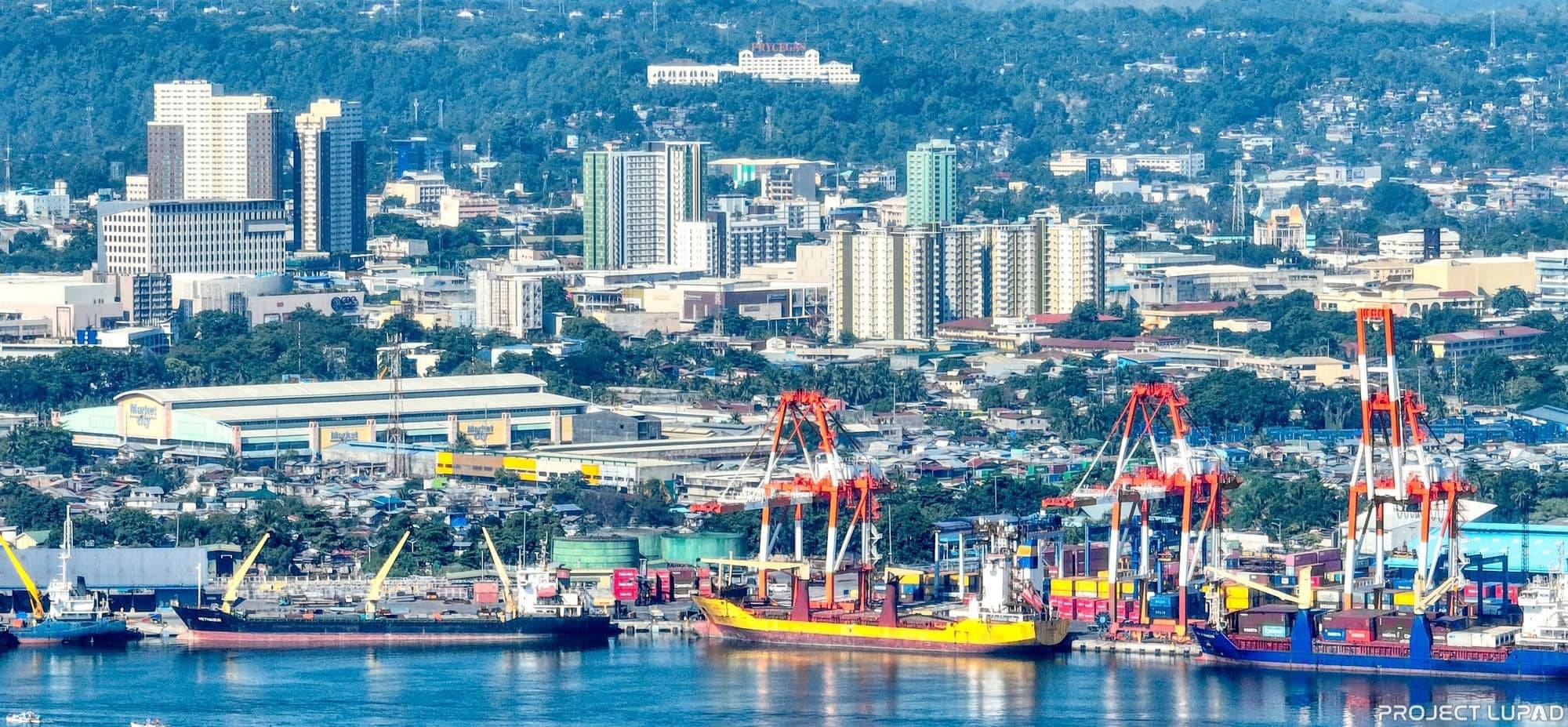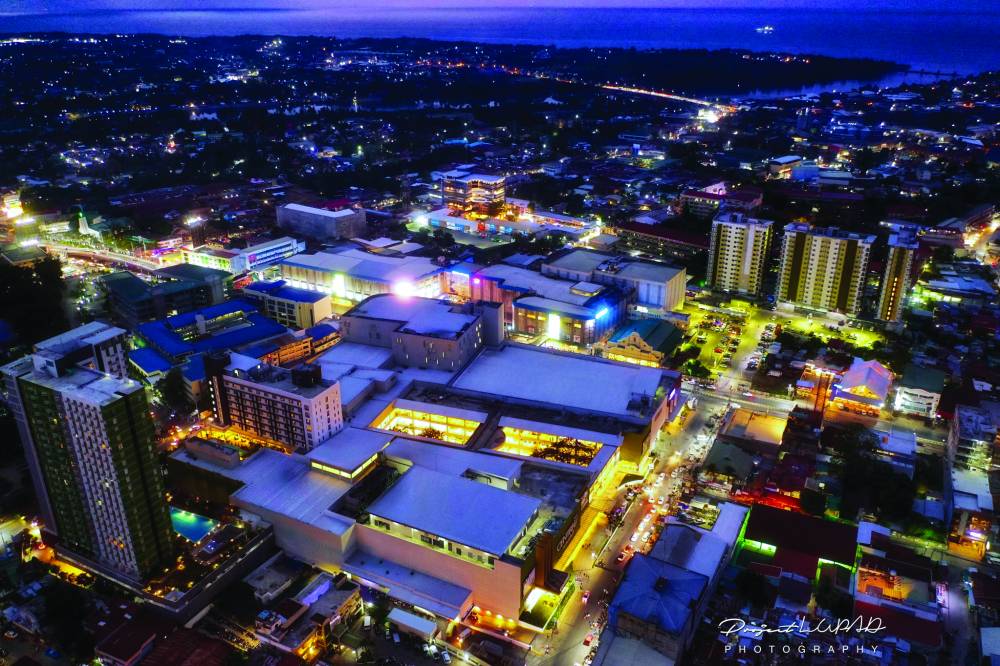‘City of Golden Friendship’ a rising metropolis

NEW ECONOMIC CENTER By 2025, Metro Cagayan de Oro is expected to be the fourth largest metropolitan center in the country, based on its projected population growth and role as a major gateway and transshipment hub in Northern Mindanao. —CAGAYAN DE ORO CITY INFORMATION OFFICE
CAGAYAN DE ORO CITY—Long regarded for the warmth and accommodating nature of its people, Cagayan de Oro, the “City of Golden Friendship,” is now a hot destination for businesses wanting to ride on the next growth wave of Northern Mindanao region.
Trends tracked by government economists show that Cagayan de Oro is the vibrant center of the country’s rising metropolis, the fourth after Manila, Cebu and Davao.
According to Mylah Faye Cariño, regional director of the National Economic and Development Authority (Neda), “the pattern of growth in terms of population and economic activity” extends up to Misamis Oriental’s Initao town to the west, and Jasaan town to the northeast, encompassing the 3,000-hectare (ha) Phividec industrial estate, the seat of Northern Mindanao’s manufacturing strength. With the city as center, that means a radius of some 30 kilometers.
This trend was noted in the Philippine Development Plan 2017-2022: “By 2025, Metro CDO (Cagayan de Oro) will become the fourth metropolitan center based on its projected population growth and functional role as a major gateway and transshipment hub in Northern Mindanao. It will also remain as a key educational center in [the region].”
In addition to Cagayan de Oro, Cariño says that based on their study, the rising metropolitan area comprises Misamis Oriental’s City of El Salvador and the towns of Initao, Gitagum, Libertad, Laguindingan, Alubijid, Opol, Tagoloan, Villanueva, Claveria and Jasaan; and the town of Manolo Fortich in nearby Bukidnon province. The towns of Talakag, Libona and Baungon in Bukidnon can potentially be added, she says.
Strategic location
With a population of over 700,000, per 2020 census, Cagayan de Oro comprises half of the metropolitan area’s 1.4 million people.
Geography is one key factor in this accelerating development, as the city is in “very strategic location,” she points out.
At present, the Port of Cagayan de Oro and the Mindanao Container Terminal in nearby Tagoloan are Mindanao’s premier platforms for international trade.
The manufacturing corridor comprising the city and the state-run Phividec Industrial Estate spanning Tagoloan and Villanueva towns, is where most of processing operations take place for agricultural produce in the region such as corn and pineapple from Bukidnon and Misamis Oriental provinces.
Ralph Paguio, former president of Cagayan de Oro Chamber of Commerce and Industry, noted that throughout Mindanao, Northern Mindanao has the most concentration of manufacturing plants, and a big portion of these is located in the Metro CDO area.
In 2023, manufacturing comprises 12 percent of gross regional domestic product, and about 44 percent of industrial output.
Cagayan de Oro contributes 28 percent to Northern Mindanao’s economic production. For Metro CDO, that will be at least 40 percent.

ROBUST ACTIVITY Economic growth is driving increased household spending in vibrant Cagayan de Oro, the Northern Mindanao regional center under the leadership of Mayor Rolando Uy. —CAGAYAN DE ORO CITY INFORMATION OFFICE
Consumption growth
This magnitude of economic activity is driving the growth of consumption, especially in the city.
According to Jordan Ian Apat, a consultant for the city government, automobile dealers in Cagayan de Oro have consistently recorded high sales in the last few years, indicating a good level of local purchasing power.
So, too, are investments in home ownership, Apat adds, which explains the mushrooming of real estate projects, especially in the uptown area that is fast developing into the new commercial hub.
A big boost to this is the plans of Pueblo de Oro Development Corp. to invest some P13.5 billion in new projects in its Pueblo Township that promises to transform the uptown area’s real estate landscape.
Also contributing to this urban transformation is the development of Xavier University — Ateneo de Cagayan’s “Campus of the Future.” Undertaken by Cebu Landmasters Inc., the project will turn 21 ha of the Jesuit-owned Manresa estate into a campus with an abundance of space and green areas, keeping some 25 ha as a protected forest, while another 14.3 ha will be developed into a mixed-used university township with residences, commercial establishments and office spaces.
Optimism
In the near future, urban expansion will be further driven by the transfer of City Hall from its present location in Barangay 6 to Upper Carmen, in a 22.9-ha property near the local government-owned ecopark. The city council has already authorized the contracting of a P2.7-billion loan for the development of the new government center, including land acquisition.
Cariño is bullish about the long-term prospects for growth of the city, citing the ongoing strategic road projects that aim to enhance its connectivity with the larger metropolitan area as well as with other regions in Mindanao, and those in the pipeline such as the railway system from Laguindingan airport to Villanueva town intended for cargo and passengers.
Apat says part of the assurance for long-term growth is having quality human resources for which the local government is heavily investing through its college scholarship program that has already reached 10,000 beneficiaries a year. In the academic year 2022-2023, the eight tertiary schools in the city produced 9,553 college graduates.
“Here you have a vast potential for business process outsourcing, for one,” says Apat.
Prospects
A low-hanging business opportunity is in tourism. Due to increased demand, the city has already outpaced its capacity for meetings, incentives, conferences and exhibitions (MICE) events.
According to Jerome de la Fuente, general manager of Limketkai Luxe Hotel, the city has only about 2,700 hotel rooms, and yet it often caters to events with over 5,000 guests. This situation has been remedied by the cooperation among players of the local hotel industry.
But De la Fuente hopes the local government can put up incentives to encourage more investments into MICE facilities to strengthen its competitiveness as a destination.
Another key issue for sustainability is the city’s resilience to natural disasters, especially coming from the battering by Tropical Storm “Sendong” (international name: Washi) in 2011.
BenCyrus Ellorin, an adviser to Mayor Rolando Uy and an environmental campaigner, is hopeful that the “metropolization” effort can result in strengthening the alliance among the local governments of Cagayan de Oro City and the provinces of Misamis Oriental and Bukidnon, with respect to managing their common watershed and river basin.
The city is at the receiving end of water dumped by rains into parts of Misamis Oriental and Bukidnon that are carried through the Cagayan de Oro Eiver, as what happened in 2011.
For Ellorin, “at the very least, the local governments’ cooperation must lead to the revitalization of the multisectoral river basin council, and to the collective realization of its leaders that because our localities benefit together, we must be together in guarding against another flood catastrophe (like in 2011).”

